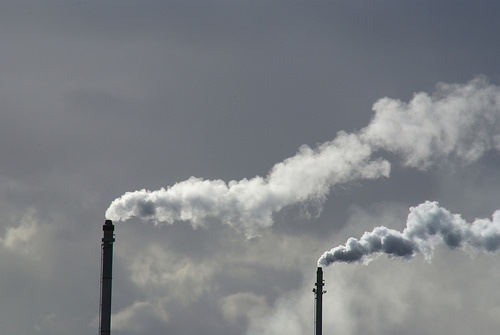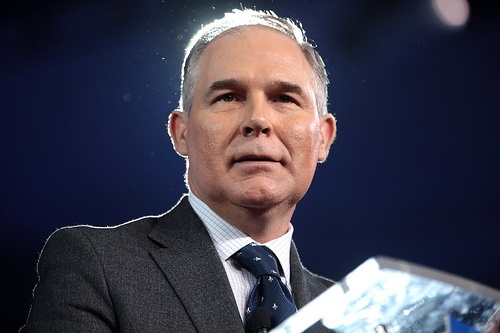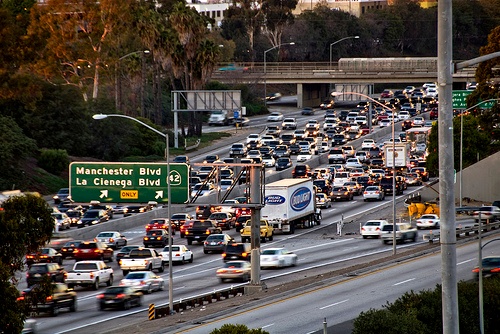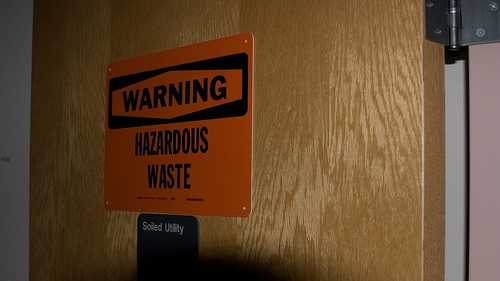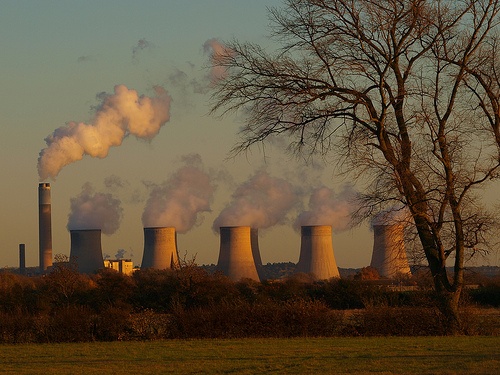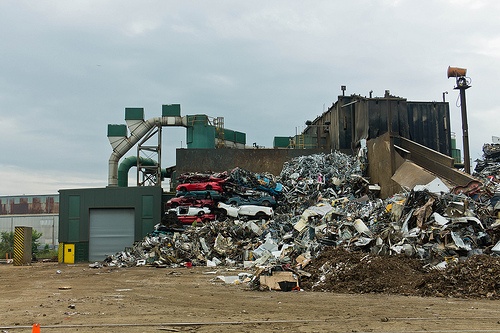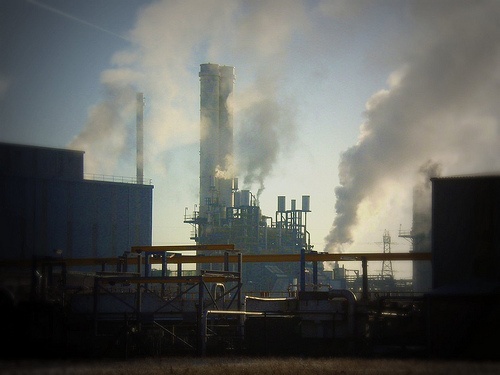Since 2012, California has administered a “cap-and-trade” program, setting total greenhouse gas (GHG) emission limits from selected major emitting sectors and creating tradeable emission permits and offsets to provide flexibility and encourage innovation. The program was created under authority of the state’s 2006 “AB 32” legislation, which focuses on reducing statewide GHG emissions by 2020. This authority would have expired in 2020, but new legislation extends the program until 2030. In order to secure enough votes for the extension, legislative leaders and Governor Brown agreed to statutory changes in this program and related air quality programs.
Read MoreAudit, Compliance and Risk Blog
California Extends and Amends its Greenhouse Gas Cap-and-Trade Program
Posted by Jon Elliott on Tue, Aug 08, 2017
Tags: California Legislation, Environmental risks, Environmental, Greenhouse Gas, ghg, cap-and-trade
Citizen Suit Against Exxon Yields $20 Million Penalty For Refinery’s Clean Air Act Violations
Posted by Jon Elliott on Tue, Jun 06, 2017
On April 26, a federal district judge in Houston issued an order assessing Exxon Mobil nearly $20 million in civil penalties for thousands of Clean Air Act (CAA) violations at Exxon’s massive Baytown, Texas refinery and petrochemical complex. This decision is the latest in a long-running “citizen suit” enforcement case, seeking additional penalties to claw back the “economic benefits from noncompliance,” on top of nearly $1.5 million in civil penalties already assessed by the Texas Commission on Environmental Quality (TCEQ) for the same violations. This decision illustrates the power of these private enforcement cases, which may become more important if the Trump Administration eases its own enforcement efforts.
Read MoreTags: Environmental risks, Environmental, ghg, climate change
EPA Administrator Scott Pruitt has been on a tour to publicize his efforts to get EPA “back-to-basics.” He launched the tour with a visit to a Pennsylvania coal mine in April. The agency issued a press release about that visit, which also summarized its “Back-to-Basics Agenda.” The press release summarizes the Agenda as “Protecting the environment; engaging with state, local and tribal partners; and creating sensible regulations that enhance economic growth.” The Agenda provides a convenient rhetorical framework for the new Administrator’s efforts to re-boot EPA’s activities.
Read MoreTags: Environmental risks, Environmental, EPA, Greenhouse Gas, ghg, Hazcom, Oil & Gas, climate change, tsca, clean water
Reopening Review of Automobile GHG Emission Standards For 2022-2025
Posted by Jon Elliott on Tue, Apr 25, 2017
The biggest difference between Presidents Obama’s and Trump’s environmental policies relate to regulation of greenhouse gases (GHGs) that most scientists and policy-makers believe contribute to climate change – a proposition which President Trump and his appointees do not embrace. On March 15, the Environmental Protection Agency (EPA) announced its reconsideration of GHG emission standards from “light duty” vehicles such as automobiles and small trucks, for model years 2022-2025. These standards were set in 2012 by EPA, in cooperation with the (US federal) National Highway Traffic Safety Administration (NHTSA) and the California Air Resources Board (ARB). Three days before President Obama left office, on January 17, EPA reaffirmed the 2022-2025 standards, determining them to be technically and economically feasible for auto makers to meet and cost-effective for customers.
Tags: California Legislation, Environmental risks, Environmental, EPA, ghg
The U.S. Environmental Protection Agency (EPA) administers rules governing the import and export of hazardous waste regulated by the Resource Conservation and Recovery Act (RCRA). These rules ensure that the U.S. meets its international responsibilities as a member of the Organization for Economic Cooperation and Development (OECD) by creating national rules that meet agreed-upon OECD standards.
Read MoreTags: Environmental risks, Environmental, EPA, Greenhouse Gas, ghg, Hazcom
The World Decides To Help The Climate By Helping The Ozone Layer
Posted by Jon Elliott on Tue, Oct 25, 2016
Last month I blogged about basic provisions of the Montreal Protocol on Substances that Deplete the Ozone Layer, and ongoing negotiations to expand it to require phaseout of chemicals that harm the stratospheric ozone layer and contribute to climate change (click here, and included links to early blogs on Montreal Protocol issues). At that time, proposals all focused on hydrofluorocarbons (HFCs). At that point, global HFC use was increasing by roughly 10% annually, driven primarily by expanding use for air conditioning as hot developing countries sought to catch up with comfort levels in their developed counterparts. Proposed timelines and end-targets for reversing that expansion varied considerably.
Read MoreTags: Environmental risks, Environmental, EPA, ghg, climate change
U.S. Commission on Civil Rights Criticizes EPA’s Environmental Justice Efforts
Posted by Jon Elliott on Tue, Oct 18, 2016
In September 2016, the U.S. Commission on Civil Rights (Commission) issued its annual “Statutory Enforcement Report for 2016”; this year’s topic is the Environmental Protection Agency’s (EPA’s) efforts to protect and promote “Environmental Justice.” The Commission reviews decades of EPA efforts, and criticizes longstanding inadequacies.
Read MoreTags: Health & Safety, Environmental risks, Environmental, EPA, ghg, Hazcom, RCRA
California Tightens Restrictions On High-Impact Short-Lived Climate Pollutants
Posted by Jon Elliott on Tue, Oct 11, 2016
Attempts to reduce greenhouse gas (GHG) emissions are more complex than they first appear. Reports in the mass media tend to focus on carbon dioxide (CO2). The United Nations Framework Convention on Climate Change (Framework Convention) focuses primarily on six GHGs, including CO2 as well as methane (CH4), nitrous oxide (N2O), hydrofluorocarbons, perfluorocarbons, and sulfur hexafluoride (SF6). Climate change scientists have identified hundreds of GHGs, with widely varying sources, relative contributions to climate change (numerical “global warming potential (GWP)”, where CO2 is defined as 1.0), and total contribution based on emitted volumes.
Read MoreTags: California Legislation, Greenhouse Gas, ghg, Hazcom, climate change
U.S. and China Renew Climate Change Vows to Jumpstart Paris Agreement
Posted by Jon Elliott on Tue, Sep 27, 2016
In recent years, the United States and China have found a rare basis for cooperation in their joint efforts to accelerate international efforts to manage and reduce climate change. The first significant step in this cooperation was the two countries’ bilateral agreement in November 2014 to manage greenhouse gas (GHG) emissions within their boundaries (I blogged about it here). At the time, the two countries offered their commitments as a way to reinforce international climate change negotiations underway to replace the expiring Kyoto Protocol to the United Nations Framework Convention on Climate Change. In December 2015, those negotiations produced the Paris Agreement, which established global mechanisms for countries to declare self-enforcing national GHG management commitments (I blogged about the Paris Agreement here).
Read MoreTags: EPA, Greenhouse Gas, ghg, climate change
White House Guidance for Agency Consideration of Climate Change in Environmental Reviews
Posted by Jon Elliott on Tue, Sep 20, 2016
On August 2, the White House’s Council on Environmental Quality (CEQ) issued guidance to assist federal agencies in their consideration of the effects of greenhouse gas (GHG) emissions and climate change when evaluating proposed federal actions. I refer to this documents as “the Guidance” below.
Read MoreTags: Environmental risks, Environmental, EPA, Greenhouse Gas, ghg, climate change, CAA, CEQA

